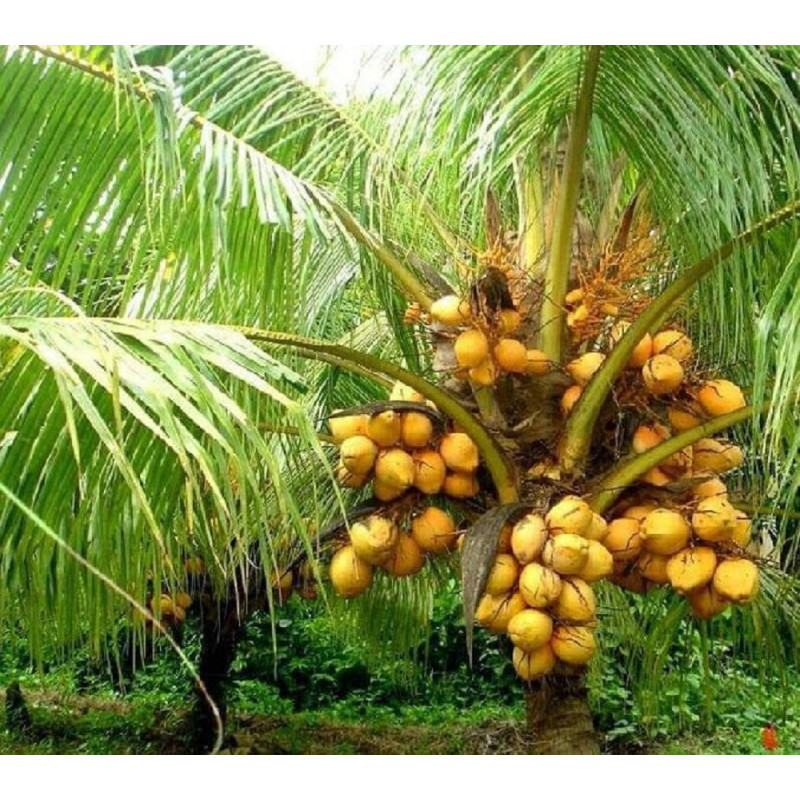




Security policy

Delivery policy

Return policy
Coconut is a fruit of the coconut palm tree, its trunk is one to two feet in diameter. It has no branches but carries a crown leaves of about 70 to 100 feet above the ground, its leaves are like a feather and with many segments, leaves are usually 10 to 20 feet long. The coconut fruit hangs at the bases of the leaves in clusters of about 10 to 15. Several clusters ripen during the year. A tree may produce 200 coconuts a year, but the average is just around 40. Coconut tree grows wild on tropical seacoasts and is cultivated in moist, frost-free climates, it is abundant in Southeast Asian countries.
FERTILIZING
Coconut palms grow well in a variety of soils as long as it is well-draining. They do need an average temperature of 72 F. (22 C.) and an annual rainfall of 30-50 inches (76-127 cm.). Fertilization of coconuts is often necessary for the home landscape. These palms are at risk of nitrogen deficiency, which is characterized by the yellowing of the oldest leaves to the entire canopy. They are also susceptible to potassium deficiency, which begins to appear as necrotic spotting on the oldest leaves increasing to affect leaflet tips and, in severe cases, the trunk is affected. Sulfur coated potassium sulfate is broadcast under the canopy at the rate of 1.5 lbs/100 square feet (0.68 kg./9.3 square meters) of canopy area four times per year to prevent the deficiency.
IRRIGATION OF COCONUT TREE
Soil moisture very often limits coconut production in those areas where long spells of dry weather prevail or where the rainfall is scanty and ill-distributed. To irrigate the palms during summer months in basins around the palm. The irrigation requirement varies according to the soil type and climatic condition. Generally, an adult palm requires 600 to 800 liters of water once in four to seven days.
PLANTING INSTRUCTIONS
1. Coconuts require full sun to grow properly. Give them as much sun as possible.
2. Keep the soil continuously moist with warm water but do not soak the plant. In winter, should your plant survive, mist it frequently or provide high levels of ambient humidity with a humidifier.
3. Coconuts are not particular to their soil but do prefer a very well-drained, sandy soil. A standard palm mixture is a good idea.
4. Feed year-round with a weak liquid fertilizer or palm fertilizer, and increase feeding during the summer months when it’s actively growing. Nevertheless, don’t be surprised if your coconut palm only lives for a year or so